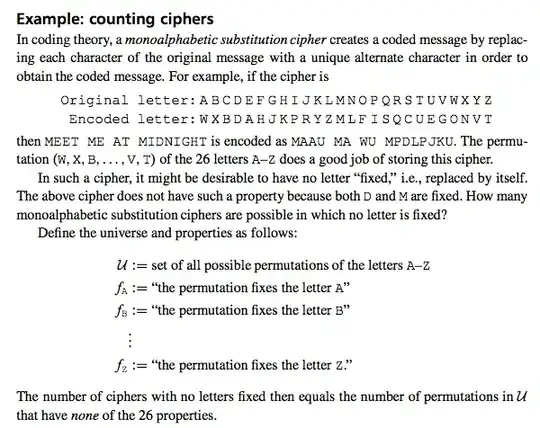I am trying this with $\{A,B,C,D\}$ but I am getting two answers. If I enumerate then I get $9$.
$ABCD,\ ABDC,\ ACBD,\ ACDB,\ ADBC,\ ADCB$
$BACD,\ BADC(1),\ BCAD,\ BCDA(2),\ BDAC(3),\ BDCA$
$CABD,\ CADB(4),\ CBAD,\ CBDA,\ CDAB(5),\ CDBA(6)$
$DABC(7),\ DACB,\ DBAC,\ DBCA,\ DCAB(8),\ DCBA(9)$
However,
$U=4!$
$$|f_A \cup f_B \cup f_C \cup f_D| = |f_A|+|f_B|+|f_C|+|f_D|-|f_A \cap f_B|-|f_A \cap f_C|-|f_A \cap f_D|-|f_B \cap f_C|-|f_B \cap f_D|-|f_C \cap f_D|+|f_A \cap f_B \cap f_C \cap f_D|$$
$$|f_A \cup f_B \cup f_C \cup f_D|=3!+3!+3!+3!-2!-2!-2!-2!-2!-2!+1=13$$
So, $$U-|f_A \cup f_B \cup f_C \cup f_D|=4!-13=11$$
What is wrong?
